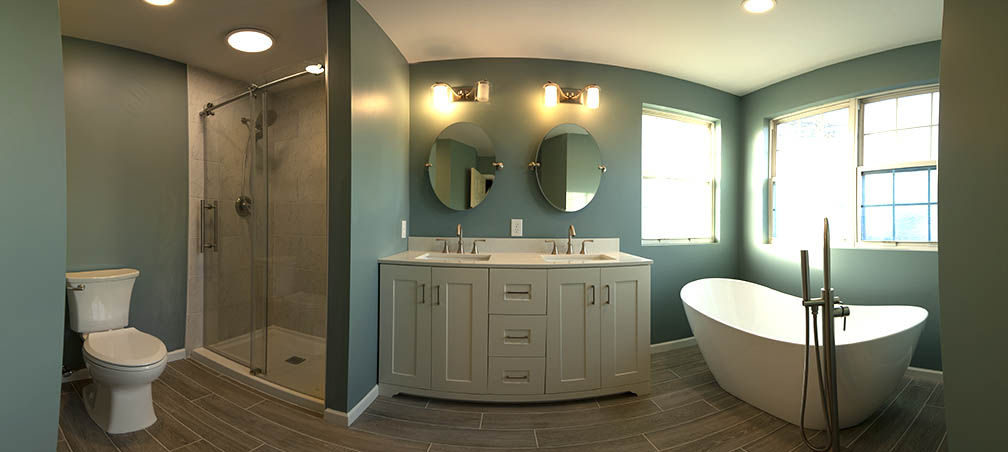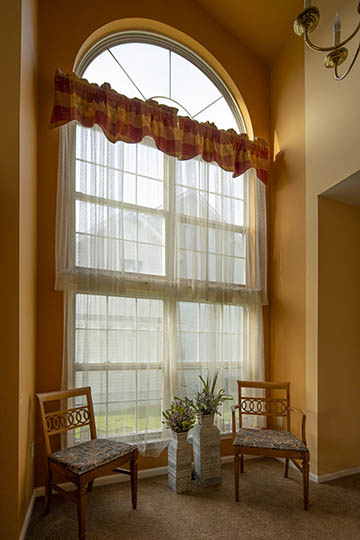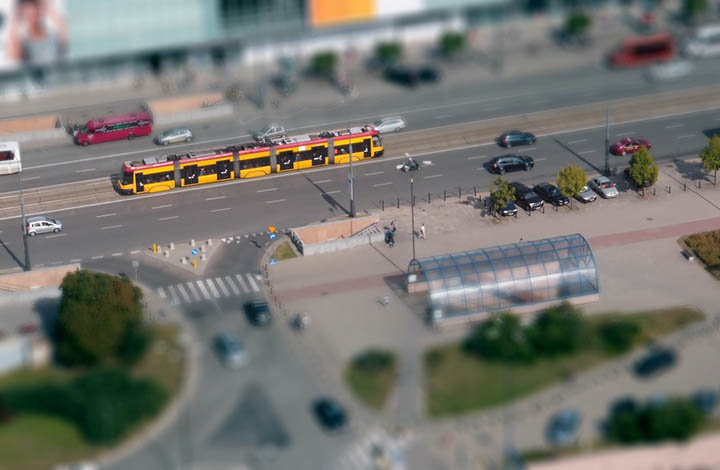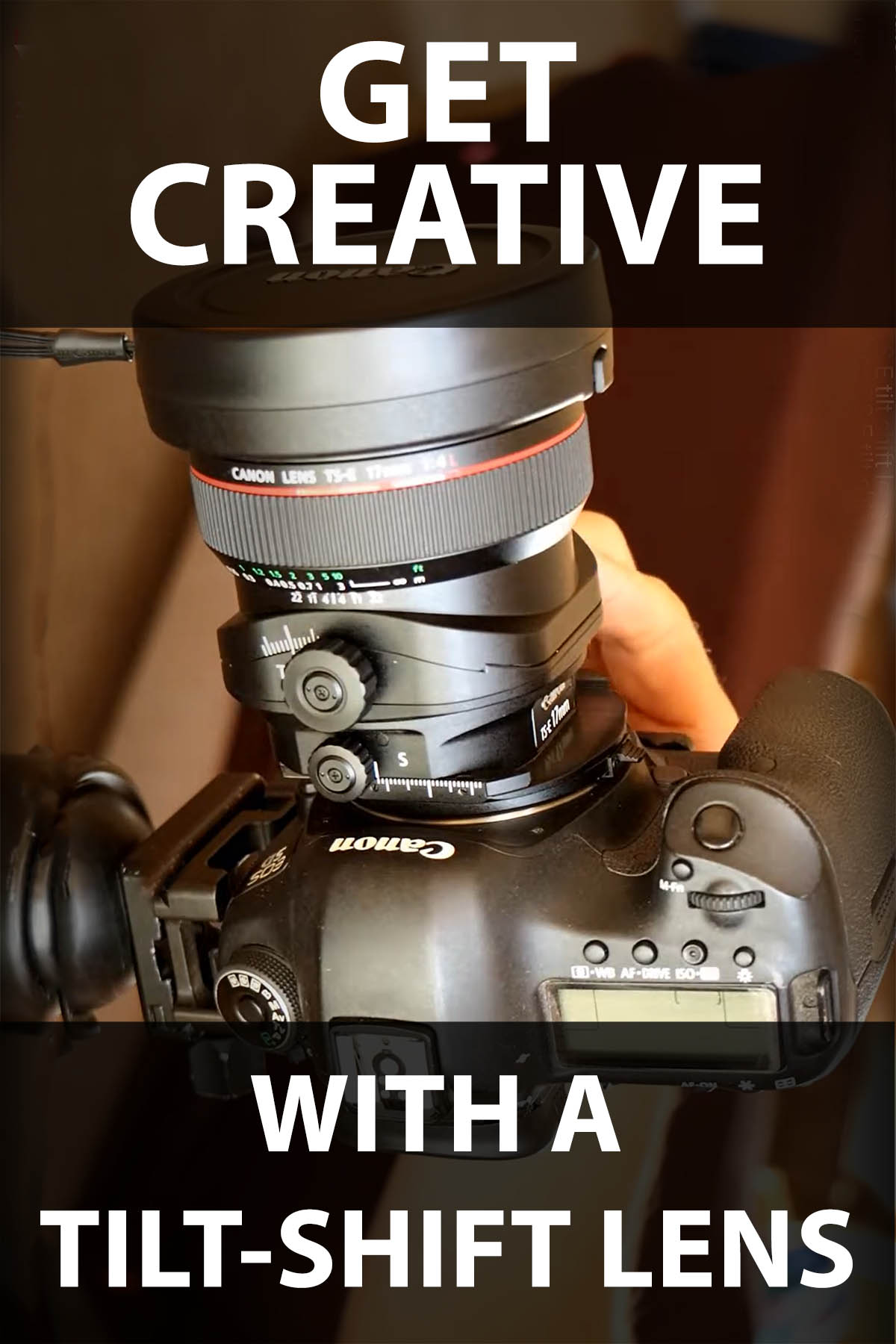what is the canon 17mm tilt shift lens used for
Also called a perspective control lens, it's official name is the Canon 17mm TS-E f/4L. More importantly, why do photographers use this specialized wide angle tilt-shift lens. This post will tell you how it's used as well as the pluses and minuses of having the 17mm TS-E lens attached to your camera. You'll also see some good examples of photos taken with the Canon 17mm tilt-shift lens.
The Canon EF 17mm tilt/shift lens is a super wide angle lens used primarily in architectural photography. It's also used for enhanced perspective control and creative focusing techniques. It can be used to exaggerate or diminish converging lines in a photograph as well as intentionally blur selective parts of the image.
Fun
More than anything else, I found this lens to be just plain fun to play with. I was very happy with my first ever attempt at shooting a panorama inside a bathroom with the Canon EF 17mm Tilt-Shift lens. Multiple photos were merged into one panoramic using software. See the panorama photos below.
 Canon EF 17mm Tilt-shift lens in vertical position.
Canon EF 17mm Tilt-shift lens in vertical position.Leveled the camera and rotated camera on tripod.
Merge of 6 images into one panoramic
No Lens Shift
In the above photo, shooting with the camera in a vertical orientation gave me a view that included more of the floor and the ceiling than I'd get with the camera in a horizontal. Notice the exaggerated perspective look you get when shooting with such a wide lens as the TS-E 17mm and rotating the camera on the tripod.
In contrast, the photo below was taken with the camera in a horizontal orientation, using 5 different lens shifts and NO ROTATION of the camera, then merged into one using software.
 Canon EF 17mm Tilt-shift lens in horizontal position.
Canon EF 17mm Tilt-shift lens in horizontal position.Leveled the camera and shifted front of lens.
Merge of 5 images into one panoramic
Keeping the camera stationary without any rotation, limits the width of coverage you can get in such a very small space. Using the shift feature of the TS-E lens, then merging the photos with distortion correction eliminates the exaggerated perspective you normally get with a 17mm lens.
Tilt-Shift Example With Interior Architecture
The first photo shows the typical converging lines you get when aiming your camera upward to include the top of a tall object. The second photo shows how the top of your subject gets cut off if you keep the camera level and don't use a lens with shift capabilities.
The third example shows you why tilt-shift lenses are great for photographing architectural subjects.
 Camera is tilted
Camera is tiltedShift not used.
 Camera is level.
Camera is level.Without lens shift
 Camera is level.
Camera is level.With lens shift
Photographers usually think of exterior architectural photos as good examples for using tilt-shift lenses, but the with and without photos above illustrate the same benefit gained.
What The Canon Tilt-Shift Lens Does
Why is it called tilt-shift? The tilting and shifting of the lens changes the location of some or all of the lens elements with respect to the camera's sensor. When the front of the lens is tilted it changes the plane of focus so that the focusing is no longer parallel to the sensor. This affects both how much and what parts of the subject are in clear focus.
The shift function, on the other hand, slides the entire lens upward or downward (or sideways if it's turned) so that a different angle of view is captured without tilting the entire camera.
6 Reasons to Use a Tilt-Shift Lens And sample photos
1. PERSPECTIVE DISTORTION. A tilt shift lens will eliminate perspective distortion. When you aim your camera upward with the typical lens you get vertical lines converging inward toward the center of your photo.
Lines that taper inward distort the appearance particularly with architectural subjects that include vertical lines. You can see that effect in the interior double high window photos above. This works for outdoor and indoor photography.
You can also use the shift ability of this lens to exaggerate the perspective of your subject. For creative purposes you may want to tilt the lens. In the architectural photos below, notice the change in shape that resulted from using the tilt function. The camera was first leveled and then the lens was shifted to include the entire building in the frame in both of these photos.
 Lens tilt on the left. No lens tilt on the right.
Lens tilt on the left. No lens tilt on the right.The first photo, on the left, was taken with a forward tilt which distorted the building vertically. The tilt function was set back to the default middle position to get the non-distorted view on the right.
2. DEPTH OF FIELD CONTROL. Using the lens shift feature on the TS-E lens to control the direction of the depth of field. This is the most powerful use of tilting your lens and controlling the plane of focus.
 Top of the lens tilted backwards.
Top of the lens tilted backwards. Top of the lens tilted forward.
Top of the lens tilted forward.A tilt-shift lens gives you, the creative artist, a handy tool to control the focus for a specific effect. The first photo intentionally emphasizes the Rummikub pieces in the front holder. The second photo makes all three holders equally sharp in focus.
3 MINIATURE EFFECT. You can create a miniature effect: By using the tilt control knob, you can make a life-sized photo appear like a miniature scale model.
The lens tilt mimics a shallow depth of field by adding a lens blur effect to the photo. The key to achieving this popular look is to take the photo from a high vantage point (at least 10 feet above the subject).
4. PANORAMIC: To shoot landscape photography: Shifting the lens decreases wide-angle lens distortion, making a tilt-shift lens the perfect option for landscape photographers. A sideways lens shift also prevents distortion of the horizon in panoramic photos; this reduces the post-processing time required to stitch panoramic shots together.
5. AVOID SELF REFLECTION. Although not come across frequently, this is a very useful advantage to having a tilt-shift lens. When photographing certain objects directly in front of you, you may include a distracting reflection of you within the subject.
To photograph a mirror or avoid showing your reflection in reflective subject use the shift feature to take a photo without you or your camera appearing in the reflection. Shifting the lens sideways allows you to stand to the side of the reflective object while still getting a frontal view.
6. MULTIPLE POINTS OF INTEREST. To shoot a photo with multiple points of interest like portraits. Adjust the tilt control knob to focus on two different subjects at the same time to help your photograph tell a story.
Use your mouse to hover on and off the photo below. See what a dramatic difference the lens shift tool of the 17mm TS-E lens makes.

How the TS-E tilt-shift Controls Operate
Both the tilt and the shift mechanisms are initiated by loosening a locking knob and then turning a 2nd adjustment knob to engage the effect. Both the tilt-shift and their locking knobs are located on the lens barrel.
Up to +/- 6.5° of tilt is possible, for focus control and +/- 12mm of shift, to adjust perspective and composition. See the photos of the knobs later in the article below.
Watch this short video that shows you how the tilt and shift mechanisms work.
The Tilt
You can tilt the front of the TS-E lens 6.5 degrees in either the positive or negative direction. This mini video clip shows you how the lens tilt works on the Canon TS-E. Show it twice in the mini video.
 Canon TS-E Lens tilt knob
Canon TS-E Lens tilt knobUsing the tilt function is a way of controlling selective focus and thereby giving you creative control of what parts are emphasized and what parts are deemphasized within each photo you take. You have the ability to have objects within your photo that are different distances from the camera, both be in clear focus
One of the really cool features of The Canon ST-E 4.0L lens is that you can rotate the front of the lens 90 degrees and use the tilt on the opposite axis, too! too. That means you can tilt up and down vertically or rotate the front of the lens and tilt left and right. That gives you a lot of creative possibilities to have fun with.
Here's the video showing you how to rotate the shifting mechanism on the Canon 17mm TS-E f/4.0 L lens:
The Shift
You can shift (slide it) the entire body of the TS-E lens 12mm (about 1/2 inch) in either direction from the default centered alignment.. That doesn't sound like much, but it makes a big difference in the view of your subject without moving the camera position.
This mini video clip shows you how the lens shift works on the Canon TS-E. Show it twice in the mini video.
 Canon TS-E lens shift knob
Canon TS-E lens shift knobShifting gives you the ability to keep your camera level and photograph objects (like buildings) from a low perspective or from a high perspective. This decreases the converging vertical line distortions in your composition that come with tilting the entire camera shooting with a regular wide angle lens.
what are the advantages of using a tilt-shift
The Canon 17mm Tilt-Shift lens has several advantages. The biggest benefit for architectural photographer s is the shift movement. Rather than aiming the entire camera upwards to include the top of a building, you can shift the front of the lens upward and you avoid the converging parallax.
Although not as talked about as much, this same benefit exists when shooting interiors. I've done some interior real estate remodeling photos where the shifting made a big difference in the photographs.
The biggest benefit for camera geeks like me and you is that a tilt-shift lens is simply a lot of fun to use. In addition to the fun of using a lens with such a wide angle, you can experiment with the focusing and perspective controls to create many different unique effects. That high level of creative possibilities make the Canon 17mm Tilt-Shift lens so enjoyable to use.
Disadvantages of a Tilt-Shift Lens
Unfortunately for all the benefits you get from using a tilt-shift lens there are also a couple of disadvantages.
MANUAL FOCUS. All tilt-shift lenses are manual focus, so if you’re looking to use one for anything fast paced like sports photography, a tilt-shift may not be the lens for you. For most Canon shooters, this is not a big deal at all. You want to precisely choose the focusing point anyway. Secondly, super wide angle lenses, like this 17mm one, give you a really deep depth of field.
PROTRUDING LENS. The front of the Canon 17mm TS-E lens is bulbous in shape and protrudes out past the lens barrel, making it easier to scratch if not careful. Regular screw on filters won't fit. You'll need an adapter if you want to attach a filter.
 The protruding lens elements are fun to photograph as a subject too!
The protruding lens elements are fun to photograph as a subject too!PRICE. The biggest disadvantage of using a tilt-shift lens is the cost. Their complex optical design and material cost push the price of a new Canon 17mm TS-E lens to well over $2000 if you're buying new. That makes us all wonder if when you should uses a tilt-shift lens makes it worth the money.
Is A Tilt-Shift Lens neCessary
You may be wondering if you even need a tilt-shift lens these days to photograph architecture. After all, you can learn how and spend time in Photoshop and correct for parallax. The problem with that approach is that you'll have to through away some of the pixels in order to manipulate the image that way.
You can also take the time to blur specific areas areas of your photo afterwards on your computer, but wouldn't it be better to be able to do in camera instead. But, what about for a professional or the efficient minded photo enthusiast? Yes, it's pretty much a requirement to get a tilt shift lens.
Is this lens worth it? It depends on the photographer. For the right user, the Canon 17mm Tilt-shift has some unique uses that you simply can't achieve with non tilting/shifting lenses. A popular alternative, if you can do without the tilt-shift, is the EF 16-35mm L for full frame Canon cameras, or the 10-18mm EF-S for APS-C crop Canons.
You can learn how to use a tilt-shift lens by reading blog posts like this one and watching the videos, but the best learning comes from hands on shooting and experimenting yourself.
Where To Buy The Canon 17mm Tilt-Shift Lens
I bought my tilt-shift lens new from Amazon back in 2018 for $2290, but prices are different now and will continue to change depending on market conditions.
Most of the big camera retailers will have this specialty lens in stock.
There's also a smart way to buy a used tilt-shift lens too. You have many options, but I've found that the condition of the used equipment from KEH to be excellent and a whole lot cheaper than buying new.
Click the ad for more details on this path to take.

WHERE I BUY USED GEAR
I've included ads from Amazon to show you the other options for Canon tilt-shift lenses and their prices. Also, if you click on one of the ads you'll be able to read the reviews from other buyers of these lenses.
As an Amazon affiliate Canon Camera Geek receives a small commission from qualifying purchases, at NO added cost to you.
Have a blast. Shoot a Canon!


Bruce Lovelace is the publisher of Canon Camera Geek. Read more about him on the About Page. He also publishes how to articles and camera gear reviews at the Photography Tips website.
View some of Bruce's photos on Instagram and Flickr. Join the tribe of followers on YouTube. Bruce also runs photo workshops and provides 1 on 1 digital photography coaching.
 Top view of 17mm ST-E lens
Top view of 17mm ST-E lens Sample TS-E architecture photo
Sample TS-E architecture photoRecent Articles
-
Canon Camera Guide. Useful Advice on Canon Cameras-Lenses-Accessories
Jan 01, 26 03:43 PM
Helpful advice on Canon Cameras, Canon lenses, and Canon camera accessories. Answers to your questions about Canon equipment. Canon camera equipment guide. -
10 Best Canon G1x Mark II Accessories - Essential Gear For G1X Mark 2
Dec 30, 25 03:59 PM
Make it fun! Upgrade your Canon Powershot Camera experience with the right Canon G1x Mark II Accessories, equipment add-ons. -
The 10 Canon RF 100mm Specs And Features That Matter.
Dec 30, 25 06:49 AM
Is the RF 100mm Macro worth the upgrade? 10 best features that matter the most. Helpful guide to the Canon RF 100mm specs and eatures you need to know about -
Canon RF 100mm Macro Sample Photos. Image Quality + Sharpness Test
Dec 29, 25 02:34 PM
Wondering if the RF 100mm is worth the upgrade? See high-resolution macro samples of insects, flowers, and portraits. Canon RF 100mm Macro Lens Sample Photos, -
Is the Canon G1X Mark II Sensor Still Good in 2026?-Specs & Real Value
Dec 22, 25 12:36 PM
Size matters. The big difference in this high-end point and shoot is the Canon G1X Mark II Sensor
This page may contain affiliate links that pay me a small commission. There is no cost to you. Review the affiliate statement at the very bottom of this page if you want more information.













